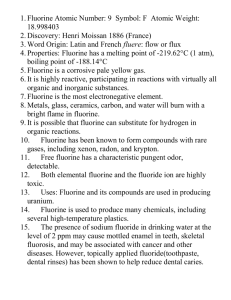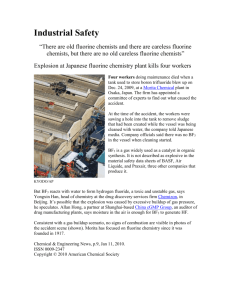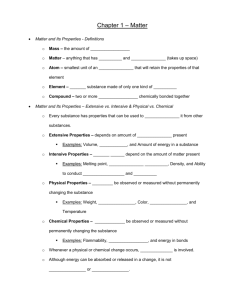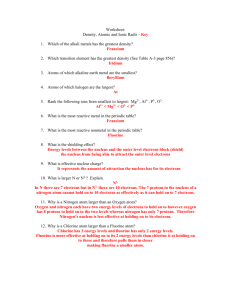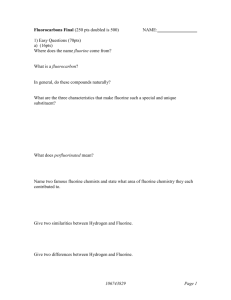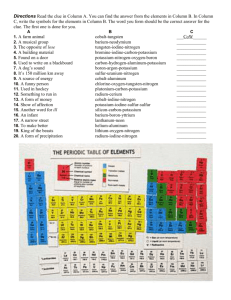elements1
advertisement
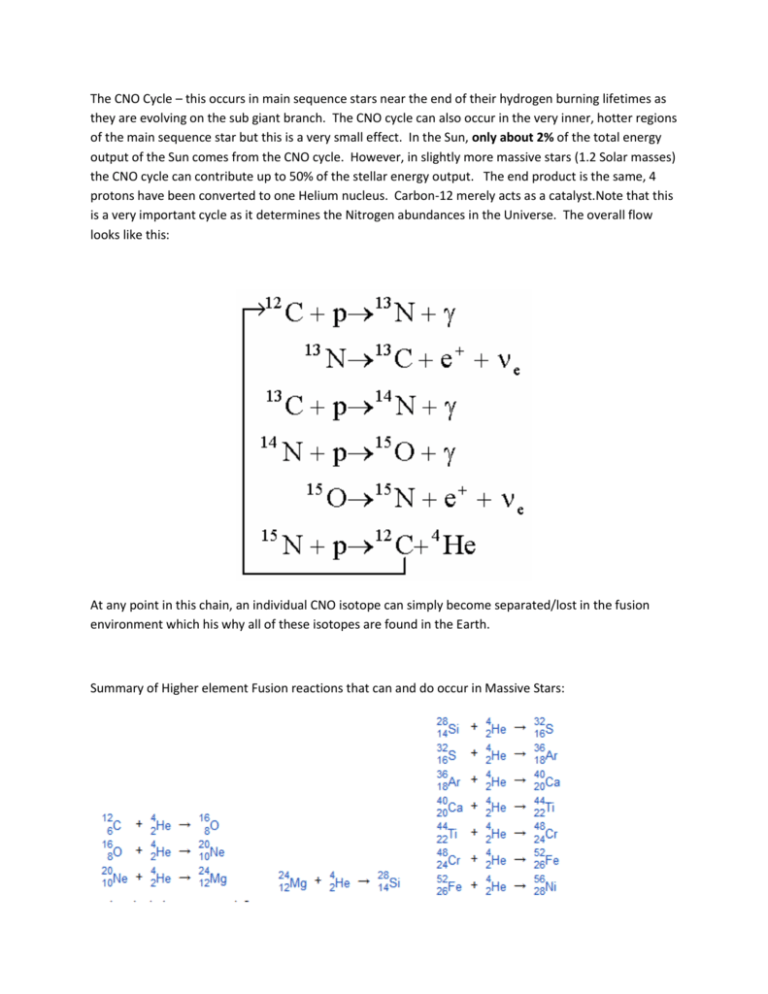
The CNO Cycle – this occurs in main sequence stars near the end of their hydrogen burning lifetimes as they are evolving on the sub giant branch. The CNO cycle can also occur in the very inner, hotter regions of the main sequence star but this is a very small effect. In the Sun, only about 2% of the total energy output of the Sun comes from the CNO cycle. However, in slightly more massive stars (1.2 Solar masses) the CNO cycle can contribute up to 50% of the stellar energy output. The end product is the same, 4 protons have been converted to one Helium nucleus. Carbon-12 merely acts as a catalyst.Note that this is a very important cycle as it determines the Nitrogen abundances in the Universe. The overall flow looks like this: At any point in this chain, an individual CNO isotope can simply become separated/lost in the fusion environment which his why all of these isotopes are found in the Earth. Summary of Higher element Fusion reactions that can and do occur in Massive Stars: While capture/fusion of heavy element + He nucleus is most common, you can occasionally get captures of single protons (H) this usually occurs in the shell burning environment as shown above. The special case of Fluorine: For many decades, the origin of this element was unknown. Straightforwardly you would expect that Nitrogen would capture Helium to produce Fluorine 18 (9 protons + 9 neutrons). However, Fluorine 18 does not exist on the earth, only Fluorine 19 exists (9 protons of 10 neutrons). This implies that the process to crate Fluorine 19 must occur in a neutron rich environment. We now understand (we think) the Fluorine 19 production occurs in specific He-burning environments in a subset of massive stars. The production reaction goes like this: Nitrogen 14 + Helium Fluorine 18 unstable Oxygen 18 (8 protons + 10 neutrons) (stable end point) So we need this (refer to the CNO cycle) Nitrogen 15 + Helium Fluorine 19 It is also possible to make Fluorine 19 in a SN event if a neutrino interacts with Neon 20


